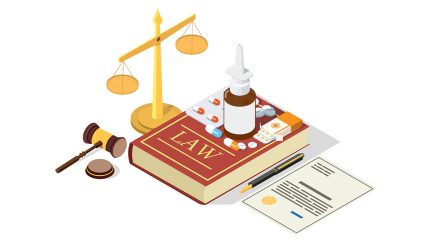Want the latest retirement plan adviser news and insights? Sign up for PLANADVISER newsletters.
ERIC Lays Out Its IRS, Treasury Priority Areas
A letter from the ERISA Industry Committee lays out recommendations for its 2024-2025 Priority Guidance Plan for regulators including retirement and health care benefits.
The ERISA Industry Committee, a national trade group representing corporate benefit leaders, has weighed in on key priority areas for coming years, including initiatives from the SECURE 2.0 Act of 2022 in retirement savings, such as student loan matching contributions and clarity on automatic enrollment mandates.
James Gelfand, president and CEO of ERIC, on Thursday released a letter on behalf of large employer member companies regarding Notice 2024-28 that guides priorities for the U.S. Department of the Treasury and Internal Revenue Service. The letter included agenda items focused on clarification and guidance on benefit health issues, such as health savings accounts and high-deductible health plans and retirement and compensation benefit issues.
“In the case of each of these recommendations, and pursuant to Notice 2024-28, ERIC believes that the guidance requested above would resolve issues affecting broad classes of taxpayers, including employee benefit plans, plan sponsors, and plan participants,” Gelfand stated in the letter. “The recommended guidance would address several unanswered questions and also reduce burdens.”
The focus areas and recommendations pertaining to retirement savings include:
Matching Contributions for Student Loan Payments and Other Contributions
Section 110 of the SECURE 2.0 Act allows employers to match employee student loan payments, which ERIC would like to encourage companies to offer. To that end, it calls on the Treasury and IRS to clarify “reasonable procedures” for employees to claim the match and address the certification of loan payments to prevent fraud. Additionally, it called on regulators to consider extending matching contributions to other tax-preferred accounts like Section 529 plans or HSAs.
Catch-up Contributions
Beginning on January 1, 2026, individuals earning over $145,000 annually can only make catch-up contributions on a Roth basis as per SECURE 2.0. ERIC noted that it had submitted detailed comments in October 2023 ahead of the initial earlier deadline of 2024, which sought clarification on various aspects including the flexibility of plan sponsors regarding catch-up contributions. They also inquired about the voluntary nature of SECURE 2.0 catch-up limit increases for plans. ERIC is seeking additional guidance on non-discrimination rules, treatment of new hires, and the “mechanics of participant deferrals.”
Clarify the Automatic Enrollment Mandate Exemption for Existing Plans
SECURE 2.0 mandates certain employer plans adopt automatic enrollment from 2025, exempting existing “grandfathered” plans, ERIC notes. IRS Notice 2024-2 clarified that a plan is established upon initial adoption of terms. However, ERIC is seeking further clarification to confirm that plan changes, except for mergers or spinoffs, don’t trigger the mandate. Additionally, in multiple employer plans, ERIC believes the IRS should specify that a pre-enactment plan merged into a post-enactment multi-employer plan retains its pre-enactment status.
Optional Roth Match
SECURE 2.0 allows employers to enable employees to request Roth-based matching contributions. Notice 2024-2 clarified that offering Roth features doesn’t mandate all Roth contribution types. However, for plans with Roth matching or nonelective contributions, ERIC calls on the IRS to confirm the feasibility of “partial Roth” elections. It also calls on them to allow Roth treatment as the default for matching and nonelective contributions, regardless of vesting status. ERIC believes limiting Roth options to fully vested participants contradicts the statute’s nonforfeitable requirement for Roth contributions, without indicating such limitations in statutory language, and calls for clarity.
The letter goes on to seek clarity in several other benefit areas, limiting unneeded notice and disclosures to participants, clarifying long-term part-time eligibility rule changes, and increasing flexibility around employees using high-deductible health plans and health savings accounts.
The letter is available here.
You Might Also Like:

JPMorgan Sued Over Health Plan’s Generic Drug Costs

Industry Groups File Amicus Brief Urging 11th Circuit to ‘Preserve Integrity of ERISA’





